DIY Moneybox: An Educational Craft for Kids
Creating a DIY moneybox with your kids is not just a fun way to spend time together; it’s also an incredible opportunity to teach them valuable lessons about money management and creativity. Imagine this: while your child is cutting, gluing, and painting their very own moneybox, they are simultaneously learning about the importance of saving money and setting financial goals. This delightful craft combines hands-on learning with essential life skills, making it a perfect project for parents and children alike. Plus, it allows for a splash of creativity and personalization, giving each child the chance to express themselves through their unique designs.
As you embark on this crafting adventure, you’ll find that the process is just as important as the end product. The joy of creating something from scratch fosters a sense of accomplishment in children, igniting their imagination and encouraging them to think outside the box. With each snip of the scissors or stroke of the paintbrush, they are not just creating a moneybox; they are building confidence and learning to appreciate the value of their hard work. So, gather your supplies, roll up your sleeves, and dive into this engaging DIY project that promises fun, education, and lasting memories!
Engaging in craft projects like making a DIY moneybox offers numerous benefits for children. Not only does it enhance their fine motor skills, but it also boosts their creativity and encourages problem-solving. When children are given the freedom to create, they learn to make choices and develop critical thinking skills. Moreover, the sense of accomplishment that comes from completing a project can significantly boost their self-esteem. Imagine the pride on their faces when they see their finished moneybox, a tangible representation of their effort and creativity!
Before jumping into the crafting fun, it’s essential to gather the right materials. The beauty of this project lies in its accessibility; you don’t need fancy supplies to create a fantastic moneybox. Here’s a quick list of common supplies you’ll need:
- Cardboard or an old shoebox
- Paint or markers
- Scissors
- Glue
- Decorative items (stickers, glitter, etc.)
With these simple materials, you’re ready to unleash your creativity and dive into the world of crafting!
When it comes to selecting a design for the moneybox, think about what will resonate most with your child. A design that reflects their interests will not only keep them engaged but also make the crafting experience more enjoyable. Options can range from simple boxes to themed moneybanks featuring their favorite animals or superheroes. The goal is to allow your child to personalize their moneybox, making it a special item that they’ll cherish.
A straightforward box design is perfect for younger children who may be new to crafting. This approach focuses on basic construction techniques, allowing them to build confidence in their abilities. Plus, it’s a fantastic way to introduce them to the concept of saving without overwhelming them with complex designs.
For those kids who thrive on creativity, themed moneyboxes can be a real game-changer. Whether it’s a cute animal, a favorite cartoon character, or even a sports theme, these designs can spark imaginative play and encourage children to save for specific goals. Just think about how excited they’ll be to save money for that new toy or game they’ve been eyeing!
Now that you have your materials and design in mind, it’s time to follow a step-by-step guide to create the moneybox. Clear instructions will help your child understand the crafting process, ensuring they can follow along and successfully complete their project. Here’s a simple outline to get you started:
- Cut a slot in the top of the box for inserting coins.
- Decorate the box using paint, markers, or stickers.
- Allow the paint to dry completely.
- Encourage your child to personalize it further with their name or favorite quotes.
What’s more exciting than crafting? Crafting with a purpose! Incorporating financial lessons into the moneybox project equips children with essential skills. As they work on their moneybox, engage them in discussions about saving, budgeting, and setting goals. This seamless integration of fun and learning lays a solid foundation for their financial literacy journey.
Encouraging children to set saving goals can significantly enhance their understanding of the value of money. Discuss with them what they would like to save for, whether it’s a new toy, a book, or even a special outing. This practice teaches them patience and the importance of working towards a desired item, turning saving into an exciting challenge rather than a chore.
Introducing basic budgeting concepts during the crafting process is another excellent way to foster financial literacy. Children can learn to allocate their savings for different purposes, helping them understand how to prioritize their spending. This skill will be invaluable as they grow and start managing their own money.
One of the most enjoyable aspects of making a moneybox is the opportunity for personalization. Allowing children to express themselves through their designs enhances their connection to the project. Customization options can include choosing colors, adding decorations, or even writing their names on the box. This sense of ownership makes the moneybox a cherished item that they will be proud to use.
Exploring various decorating techniques can further enhance the creative experience. Children can use paints, stickers, or even recycled materials to make their moneybox truly unique. The sky’s the limit when it comes to creativity, and the more they experiment, the more they’ll learn about their own artistic preferences.
Finally, using the moneybox project as a platform to discuss family values around money can lead to meaningful conversations. Reinforcing the importance of saving and financial responsibility within the family context helps children understand the bigger picture. It’s not just about having fun; it’s about instilling values that will guide them throughout their lives.
Q: What age is appropriate for crafting a moneybox?
A: Children as young as 4 can participate with adult supervision, while older kids can take on more complex designs independently.
Q: How can I encourage my child to save money?
A: Set saving goals together, celebrate milestones, and discuss the importance of saving for future desires.
Q: What if my child loses interest in saving?
A: Keep the experience fun! Regularly revisit their goals and celebrate any progress to reignite their enthusiasm.
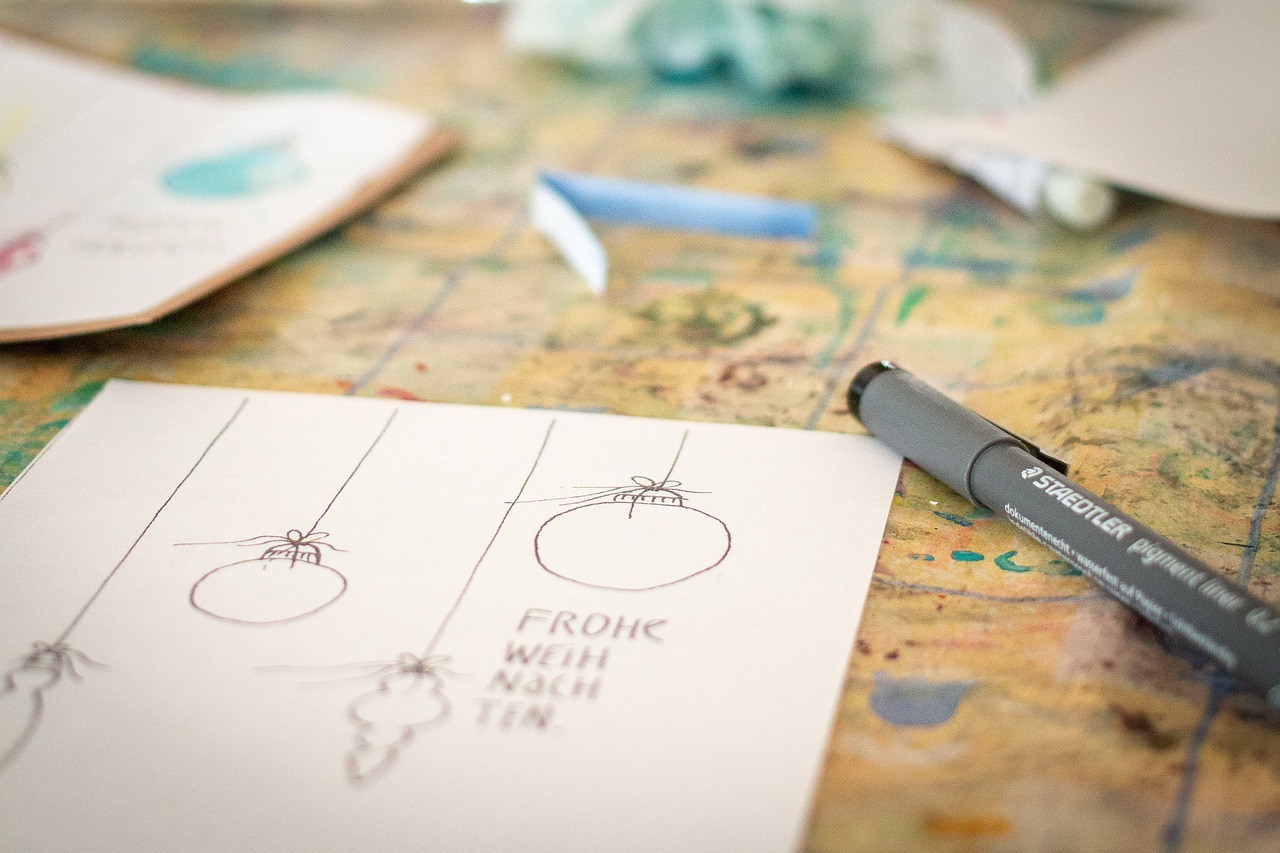
Benefits of Crafting with Kids
Crafting with kids is more than just a fun way to pass the time; it’s an enriching experience that offers a multitude of benefits for their development. When children engage in creative activities, they not only unleash their imagination but also hone essential skills that will serve them well throughout life. One of the most significant advantages of crafting is the enhancement of fine motor skills. As children cut, glue, and assemble materials, they develop hand-eye coordination and dexterity, which are crucial for tasks like writing and using tools.
Moreover, crafting acts as a powerful catalyst for boosting creativity. It encourages kids to think outside the box, experiment with colors, shapes, and materials, and ultimately express themselves in unique ways. Imagine a child transforming a simple cardboard box into a treasure chest or a spaceship! Such activities not only spark joy but also foster a sense of accomplishment and pride as they see their ideas come to life.
Another essential benefit of crafting is its ability to encourage problem-solving. When faced with challenges, such as figuring out how to make a box stand or how to decorate it, children learn to think critically and devise solutions. This skill is invaluable as they navigate their way through various situations in life, whether in school or at home.
Additionally, crafting provides an excellent opportunity for bonding between parents and children. As they work together on a project, they share ideas, laugh, and create lasting memories. It’s not just about making something tangible; it’s about fostering relationships and communication. The joy of creating together can strengthen family bonds and instill a sense of teamwork.
In summary, the benefits of crafting with kids are numerous and impactful. From enhancing fine motor skills and boosting creativity to encouraging problem-solving and strengthening family relationships, these activities lay a solid foundation for their future. So, why not grab some supplies and start crafting? You never know what amazing creations await!
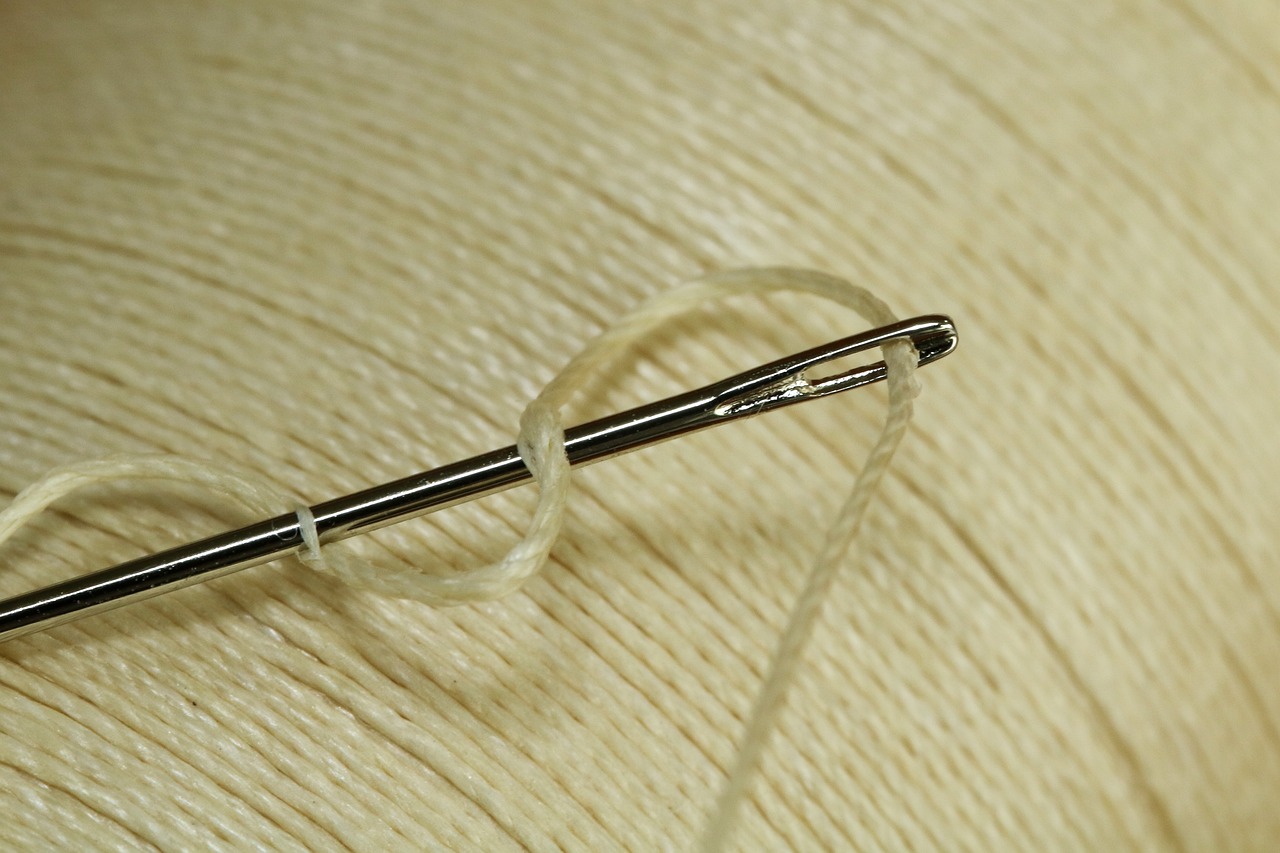
Materials Needed for Your Moneybox
When embarking on the exciting journey of creating a DIY moneybox with your child, gathering the right materials is essential for a successful and enjoyable project. Not only does this make the process smoother, but it also adds an element of anticipation and fun! The beauty of crafting a moneybox lies in its simplicity; you don’t need to break the bank to get started. Most of the materials are likely already lying around your home, which is a fantastic way to recycle and teach children about resourcefulness.
To kick off your crafting adventure, here’s a quick rundown of the basic materials you'll need:
- Cardboard: This will serve as the primary structure of your moneybox. You can repurpose old boxes from deliveries or cereal boxes, making it an eco-friendly choice!
- Paint: A splash of color can transform a plain cardboard box into a vibrant moneybox. Acrylic paints work well, and you can even use leftover wall paint for a larger project.
- Scissors: Safety scissors are perfect for younger kids, while older children can use regular scissors under supervision.
- Glue: A good adhesive is crucial for keeping everything together. Craft glue or a glue stick is ideal for paper and cardboard projects.
- Decorative items: Think stickers, glitter, ribbons, or anything that sparks joy! These elements allow children to personalize their moneybox and express their creativity.
- Markers or crayons: These are perfect for adding designs, names, or even inspirational quotes to the moneybox.
Once you’ve gathered these materials, you’re ready to dive into the creative process! Remember, the goal is to make this experience enjoyable and educational. Encourage your child to think outside the box—literally! They can experiment with different shapes and sizes of moneyboxes. For instance, why not try making a piggy bank shape or a treasure chest? The only limit is your imagination!
In addition to the materials listed above, you might also consider incorporating some recycled items, such as:
| Recycled Item | Potential Use |
|---|---|
| Plastic bottles | Cut the top off to create a unique moneybox shape. |
| Old jars | Perfect for a see-through moneybox that lets kids watch their savings grow. |
| Food containers | Transform them into fun, themed moneyboxes with some paint and decorations. |
By using recycled materials, you’re not only crafting a moneybox but also instilling important values about sustainability and creativity in your child. So gather your supplies, roll up your sleeves, and get ready to create a masterpiece that will not only serve as a practical tool for saving but will also be a cherished keepsake full of memories!
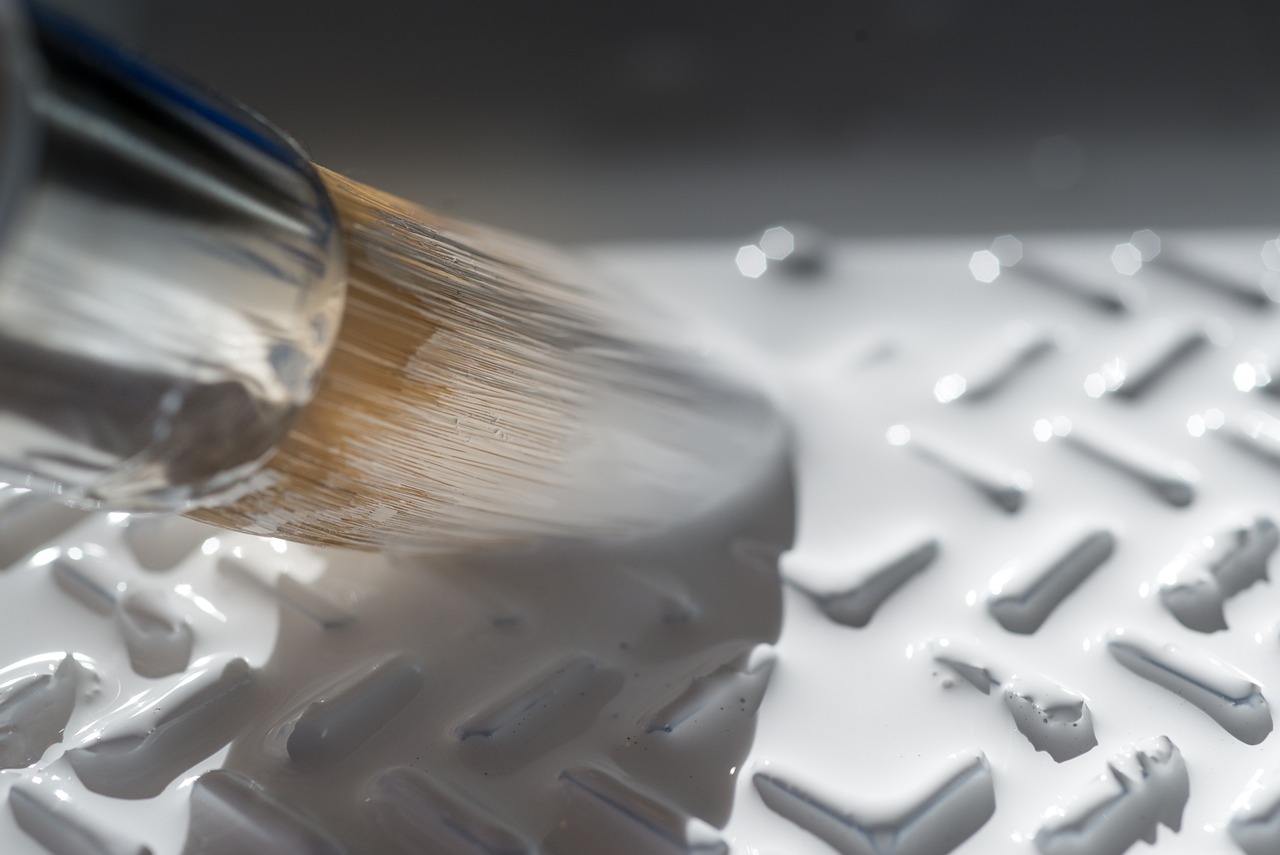
Choosing the Right Design
When it comes to creating a DIY moneybox, the design you choose can make all the difference in how much fun your child will have during the crafting process. It's not just about having a container for coins; it's about creating something that resonates with their interests and sparks their imagination. Think of it like picking out a new toy—if it’s something they love, they’ll be more excited to play with it!
Start by having a conversation with your child about what they enjoy. Do they love animals, superheroes, or maybe a favorite TV show? This can guide you in selecting a design that will keep them engaged. Here are some popular design ideas that might inspire you:
- Simple Box Design: This is perfect for younger children who are just starting to explore their crafting skills. A basic cube can be easily decorated with stickers, paint, or markers, allowing them to express their creativity without feeling overwhelmed.
- Themed Moneyboxes: For those kids who have a favorite character or theme, consider crafting a moneybox that reflects that passion. Whether it’s a cute animal or a superhero, themed designs can make saving money feel like a fun adventure.
- Interactive Designs: How about creating a moneybox that doubles as a game? Think of a design that allows kids to drop coins into a slot while also playing a simple game or challenge. This can make the process of saving feel less like a chore and more like a playful activity.
Choosing the right design is all about tapping into your child's interests and making the experience enjoyable. Remember, the goal is to create something that they will cherish and use regularly, which can help reinforce the habit of saving. Once you have a design in mind, gather your materials and let the creativity flow!
Q: What materials do I need for a DIY moneybox?
A: Common materials include cardboard, scissors, paint, glue, and decorative items like stickers or markers. You can also use recycled materials for a more eco-friendly approach!
Q: How can I make the moneybox more engaging for my child?
A: Personalizing the design based on your child's interests is key. Involve them in the decorating process and encourage them to express their creativity. You can also turn it into a themed project related to their favorite characters.
Q: What age is appropriate for making a DIY moneybox?
A: Children as young as 4 can participate in simple designs with adult supervision. As they grow older, they can take on more complex designs and techniques.
Q: Can I incorporate financial lessons while crafting?
A: Absolutely! Use this opportunity to discuss the importance of saving money, setting goals, and even basic budgeting concepts. It’s a hands-on way to teach valuable life skills.

Simple Box Design
Creating a for a DIY moneybox is not only a fantastic way to introduce children to crafting but also an excellent opportunity for them to develop their creative skills. This design is particularly suitable for younger children, as it emphasizes basic construction techniques that are easy to manage. Think of it as the building blocks of crafting—simple yet effective!
To start, you’ll need a few basic materials that are likely already lying around your home. The simplicity of this project means that you don’t need to spend a fortune on supplies. Here’s a quick list of what you’ll need:
- Cardboard (old boxes work perfectly!)
- Scissors
- Glue or tape
- Paint or markers for decoration
- Optional: Stickers, glitter, or any other decorative items
Once you have your materials ready, the fun begins! The first step is to cut the cardboard into the desired shape. A basic cube or rectangular prism is an excellent choice for beginners. Kids can measure and cut the cardboard, which enhances their fine motor skills and gives them a sense of accomplishment. After cutting, they can assemble the box using glue or tape, which teaches them about construction and design.
Next comes the exciting part—decorating! This is where children can truly express their personalities. Let them choose their favorite colors and patterns to paint or draw on their moneybox. They can even use stickers or recycled materials to add a unique touch. Imagine a plain box transforming into a vibrant treasure chest, reflecting their creativity and individuality. This step not only makes the moneybox visually appealing but also instills a sense of pride in their work.
Finally, once the box is assembled and decorated, it’s time to create a slot for inserting money. This can be done by simply cutting a small opening on the top or side of the box. Encourage children to think about what they want to save for, whether it’s a new toy or a special outing. This not only makes the moneybox functional but also adds an element of purpose to the project.
In conclusion, a simple box design serves as an excellent introduction to crafting for children. It lays the groundwork for more complex projects down the line while providing a platform for creativity and self-expression. Plus, it’s a rewarding experience that can spark conversations about saving and financial responsibility!
Q: What age is appropriate for kids to start making a DIY moneybox?
A: Children as young as 5 can participate with adult supervision. The project can be adjusted in complexity based on the child's age and skill level.
Q: Can we use recycled materials for this project?
A: Absolutely! Using recycled materials not only makes the project more eco-friendly but also encourages creativity. Items like old cereal boxes or packaging can work great!
Q: How can I encourage my child to save money using the moneybox?
A: Discuss the importance of saving and set specific goals together. For example, if they want a new toy, help them calculate how long it will take to save enough money.

Themed Moneybox Ideas
Creating a themed moneybox can turn a simple crafting project into an exciting adventure for kids. Imagine the joy on their faces when they see their favorite characters or animals come to life in the form of a moneybank! Themed designs not only spark creativity but also encourage imaginative play, making saving money feel like a fun game rather than a chore. For instance, if your child loves dinosaurs, why not create a moneybox that resembles a friendly T-Rex? Or perhaps they adore unicorns, and a shimmering, pastel-colored moneybox could be the perfect fit. The possibilities are endless!
When choosing a theme, it’s essential to involve your child in the decision-making process. Ask them what their favorite animals, colors, or characters are. This engagement fosters a deeper connection to the project, making them more likely to take pride in their creation. Additionally, themed moneyboxes can serve as a motivational tool for saving. For example, if your child is passionate about space, they might be encouraged to save for a new telescope or a trip to a planetarium. By associating their savings with a tangible goal, you help them understand the value of money in a practical context.
Here are a few themed moneybox ideas that can inspire creativity:
- Animal Kingdom: Create a moneybox shaped like a favorite animal—think of a cute piggy bank or a majestic elephant. Use bright colors and textures to make it visually appealing.
- Superheroes: Design a moneybox that resembles a superhero, complete with a cape! This can motivate kids to save for their own superhero-themed toys or outings.
- Fantasy Worlds: Dive into the realm of fantasy with a fairy tale castle or a dragon's lair. These imaginative designs can encourage storytelling and creative play.
- Sports Themes: For the little athlete, a moneybox in the shape of a soccer ball or basketball can be a great way to inspire savings for sports gear or tickets to a game.
As you work together on these themed moneyboxes, encourage your child to think about how they can decorate their creation to reflect their personality. This could involve painting, adding stickers, or using recycled materials to enhance the theme. Not only does this process nurture their artistic skills, but it also reinforces the concept of personal investment in their savings journey. Involve them in discussions about what they want to save for, and watch as their excitement for saving grows!

Steps to Create the Moneybox
Creating a DIY moneybox with your child can be an exciting adventure that not only sparks their creativity but also teaches them valuable lessons about saving. To get started, you'll want to gather all the necessary materials first. This includes items like cardboard, scissors, glue, and paints. Once you have everything at hand, the real fun begins! Here’s a simple step-by-step guide to help you and your little one craft a moneybox that’s both functional and fun.
Begin by deciding on the design of your moneybox. If you’re going for a simple box, cut the cardboard into equal-sized squares or rectangles. For themed moneyboxes, you might want to sketch out your design first. This could be anything from a cute animal to a favorite cartoon character. Engaging your child in this brainstorming process makes them feel involved and excited about the project.
Once you have your design ready, it’s time to assemble the pieces. Use glue to stick the sides together, ensuring that the structure is sturdy. This is where your child can really get hands-on! They can help with applying the glue and holding the pieces in place until they dry. Make sure to leave an opening at the top for inserting coins. You can cut a slot with scissors or a craft knife—just be sure to supervise closely during this step for safety.
After the structure is complete, it's time for decoration! This part allows for endless creativity. Encourage your child to paint their moneybox in their favorite colors or to use stickers and other embellishments to personalize it. You can even create a mini art session by providing various materials like glitter, fabric scraps, or recycled items. The goal here is to make the moneybox a reflection of your child’s personality.
As the final touch, discuss with your child how they plan to use their moneybox. Will it be for saving up for a new toy, a fun outing, or perhaps a special gift for someone? This conversation not only enhances their crafting experience but also instills a sense of purpose behind saving money. Once everything is dry and decorated, display the moneybox proudly in their room. It will serve as a constant reminder of their savings goals and the fun they had creating it!
- What age is appropriate for children to start crafting a moneybox? Generally, children aged 5 and up can participate with adult supervision. Younger kids can enjoy the decorating process while older ones can handle more complex construction.
- Can we use recycled materials for the moneybox? Absolutely! Using recycled materials like plastic containers or shoe boxes is a great way to teach kids about sustainability while being creative.
- How can I encourage my child to save money in the moneybox? Set specific saving goals together and celebrate milestones. For example, if they reach a certain amount, consider rewarding them with a small treat or outing.
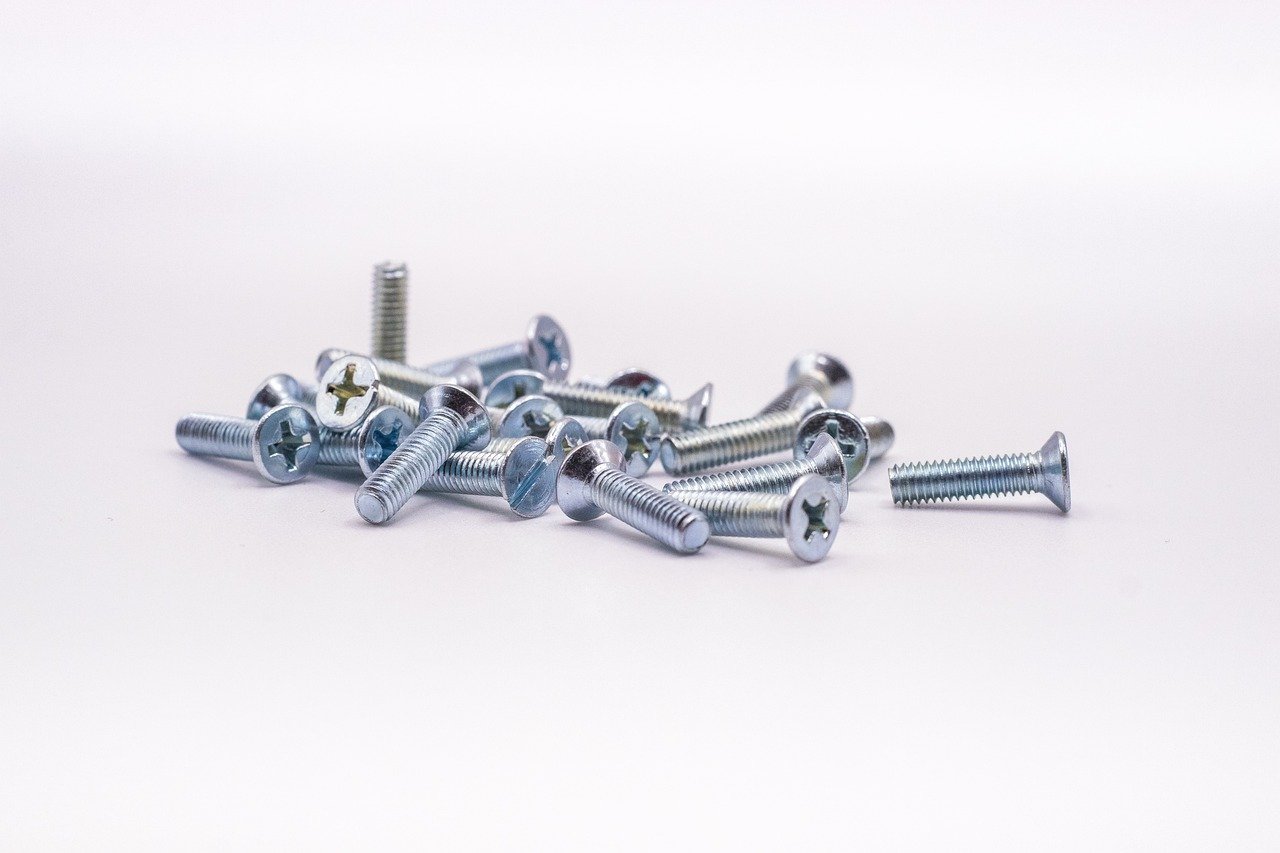
Teaching Financial Literacy
In today's fast-paced world, equipping children with financial literacy is more important than ever. By incorporating financial lessons into the DIY moneybox project, you can provide a fun and engaging way for kids to learn essential money management skills. Imagine your child not only crafting a beautiful moneybox but also grasping the fundamental concepts of saving and budgeting while doing so! This hands-on experience allows them to understand the value of money in a practical context, making the learning process both enjoyable and memorable.
As you work together on the moneybox, take the opportunity to discuss the concept of saving. Ask your child questions like, "What do you want to save for?" or "How much do you think you need to save to get that toy?" Such conversations can help them set tangible saving goals. For instance, if they want to buy a new video game, you can break down the cost and encourage them to save a certain amount each week. This practice not only teaches them patience but also reinforces the idea that good things come to those who wait!
Additionally, while creating the moneybox, introduce the basics of budgeting. You can explain the importance of allocating funds for different purposes, such as spending, saving, and even sharing. Consider setting up a simple table to illustrate how they can divide their savings:
| Purpose | Percentage | Amount (if saving $20) |
|---|---|---|
| Spending | 50% | $10 |
| Saving | 30% | $6 |
| Sharing (Charity) | 20% | $4 |
This simple breakdown can help them visualize how to manage their money effectively. By actively involving them in discussions about budgeting, you lay a strong foundation for their future financial literacy, which will serve them well as they grow older.
Remember, the goal is not just to create a moneybox but to foster a financial mindset. Encourage your child to think critically about their spending and saving habits. Ask them to reflect on their choices and the reasons behind them. This dialogue not only strengthens their understanding of money management but also builds their confidence in handling financial decisions.
In conclusion, teaching financial literacy through the DIY moneybox project is a rewarding experience that combines creativity with essential life skills. By engaging in these discussions and activities, you're not just crafting a fun project; you're preparing your child for a financially responsible future. So grab those supplies, get crafting, and watch as your child learns invaluable lessons about money management!
- What age is appropriate for kids to start learning about money? It's never too early! Children as young as 4 or 5 can begin understanding basic concepts like saving and spending through fun activities.
- How can I make financial lessons fun for my kids? Use interactive projects like the DIY moneybox, games, and real-life scenarios to make learning about money enjoyable.
- Can I incorporate technology into teaching financial literacy? Absolutely! There are many apps and online games designed to teach kids about budgeting and saving in a fun way.
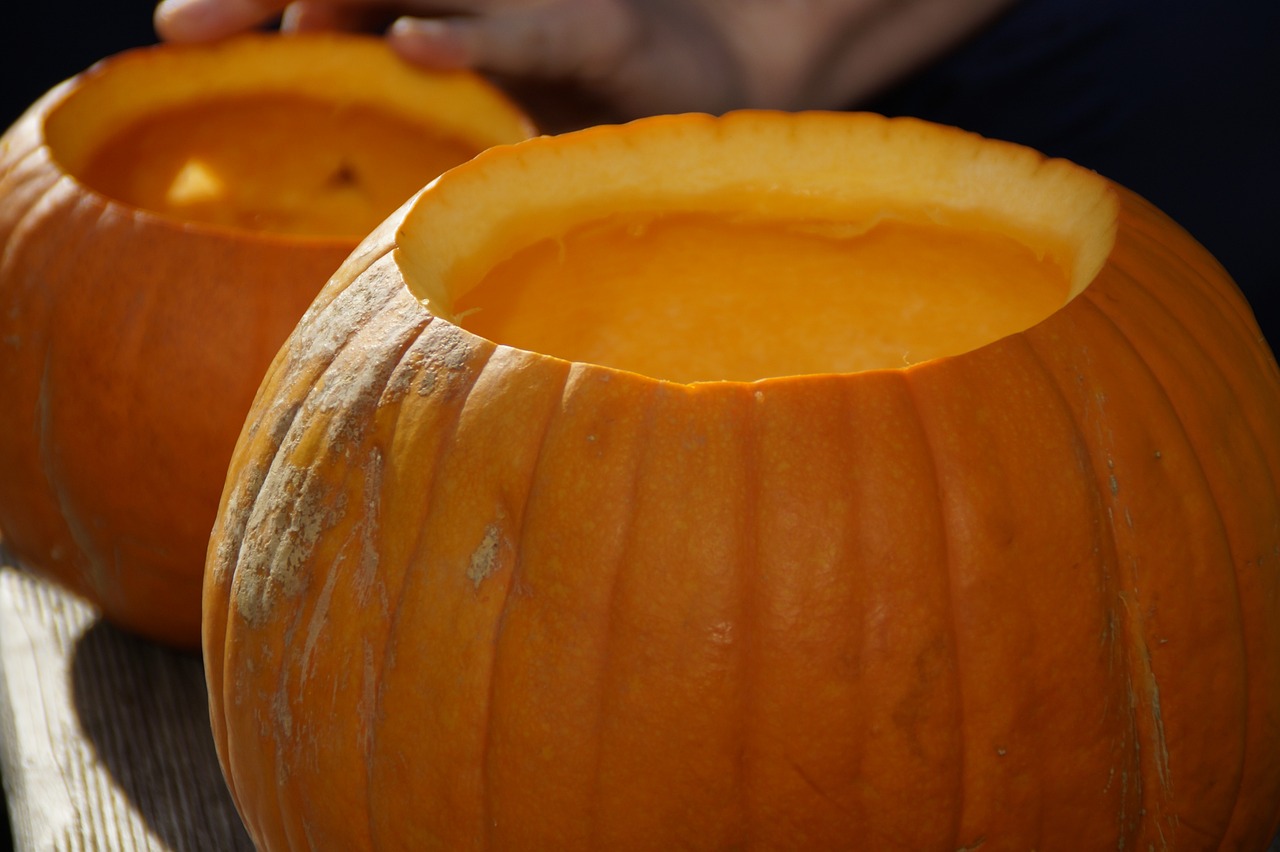
Setting Saving Goals
Setting saving goals is an essential part of teaching children about the value of money. It’s like giving them a treasure map that leads to their very own pot of gold! When kids have something specific to save for, they become more motivated and focused. Imagine telling your child they can save up for a new toy, a fun outing, or even a special treat. This not only makes the process of saving exciting but also instills a sense of purpose in their financial journey.
To make this process even more engaging, you can help your child create a visual representation of their savings goal. For instance, consider using a simple chart or a colorful poster where they can track their progress. You could even set up a small rewards system where they receive stickers or stars for every milestone they reach. This way, saving becomes a fun and interactive experience!
Here are a few tips to effectively set saving goals with your child:
- Be Specific: Instead of saying, “Let’s save money,” encourage them to think of something specific they want. For example, a new video game, a bike, or even a trip to the amusement park.
- Set a Timeframe: Discuss how long it might take to save for their goal. This helps them understand patience and the concept of time in relation to saving.
- Break It Down: If the goal seems big, break it down into smaller, manageable steps. For instance, if they want a toy that costs $50, help them figure out how much they need to save each week to reach that goal.
By incorporating these strategies, children will learn that saving is not just about putting money away; it’s about working towards something meaningful. This foundational understanding of saving goals can set them on a path to becoming financially responsible adults, capable of making informed decisions about their money in the future.
- Why is it important to teach kids about saving?
Teaching kids about saving helps them develop financial literacy skills early on, which can lead to better money management in adulthood. - What age is appropriate to start teaching saving goals?
Children can start learning about saving as early as age 5, with simple concepts that can evolve as they grow older. - How can I encourage my child to save more?
Encouraging your child to save can be done through setting specific goals, offering rewards for milestones, and involving them in financial discussions.

Understanding Basic Budgeting
When it comes to teaching children about money, one of the most crucial concepts to grasp is budgeting. Understanding basic budgeting is like giving kids a roadmap to navigate their financial journey. Imagine you’re on a treasure hunt; without a map, you might end up lost or miss the treasure altogether. Budgeting helps kids allocate their resources wisely, ensuring that they can save for things they really want while also learning to manage their spending.
To begin with, it’s essential to explain what a budget is. A budget is simply a plan that outlines how much money you have, how much you will spend, and how much you will save. Kids can start by tracking their allowance or any money they receive. Encourage them to jot down their income and expenses. This practice not only builds awareness but also instills a sense of responsibility.
Here’s a simple way to introduce budgeting to kids:
- Track Income: Help them list all sources of income, like allowance, gifts, or earnings from chores.
- Identify Expenses: Discuss what they might want to spend their money on, such as toys, snacks, or games.
- Set Savings Goals: Encourage them to set aside a portion of their money for future purchases or experiences.
Using a simple table can also help visualize the budgeting process. Here’s how you could set it up:
| Item | Amount |
|---|---|
| Income | $10 |
| Expenses | $3 (snacks) |
| Savings | $7 |
This simple exercise not only teaches kids how to budget but also helps them understand the importance of making choices. They might want to buy that new video game, but if they haven’t planned for it, they’ll have to wait. This waiting period can teach patience and the value of saving.
Moreover, discussing the concept of needs versus wants can greatly enhance their budgeting skills. A need is something essential for survival, like food or shelter, while a want is something that brings pleasure but isn’t necessary. Helping children differentiate between these two categories can lead to smarter financial decisions.
As they grow older, these budgeting basics will serve as a foundation for more complex financial concepts. They’ll be better prepared to manage their money, understand credit, and even invest in their futures. By incorporating budgeting lessons into the DIY moneybox project, you’re not just crafting a fun item; you’re also equipping your child with essential life skills that will benefit them for years to come.
- What age should I start teaching my child about budgeting? It's never too early to start! Even young children can grasp basic concepts like saving and spending.
- How can I make budgeting fun for my child? Use games, apps, or even creative projects like the DIY moneybox to engage them in the learning process.
- What if my child struggles with saving? Encourage them by setting small, achievable savings goals and celebrating their progress.
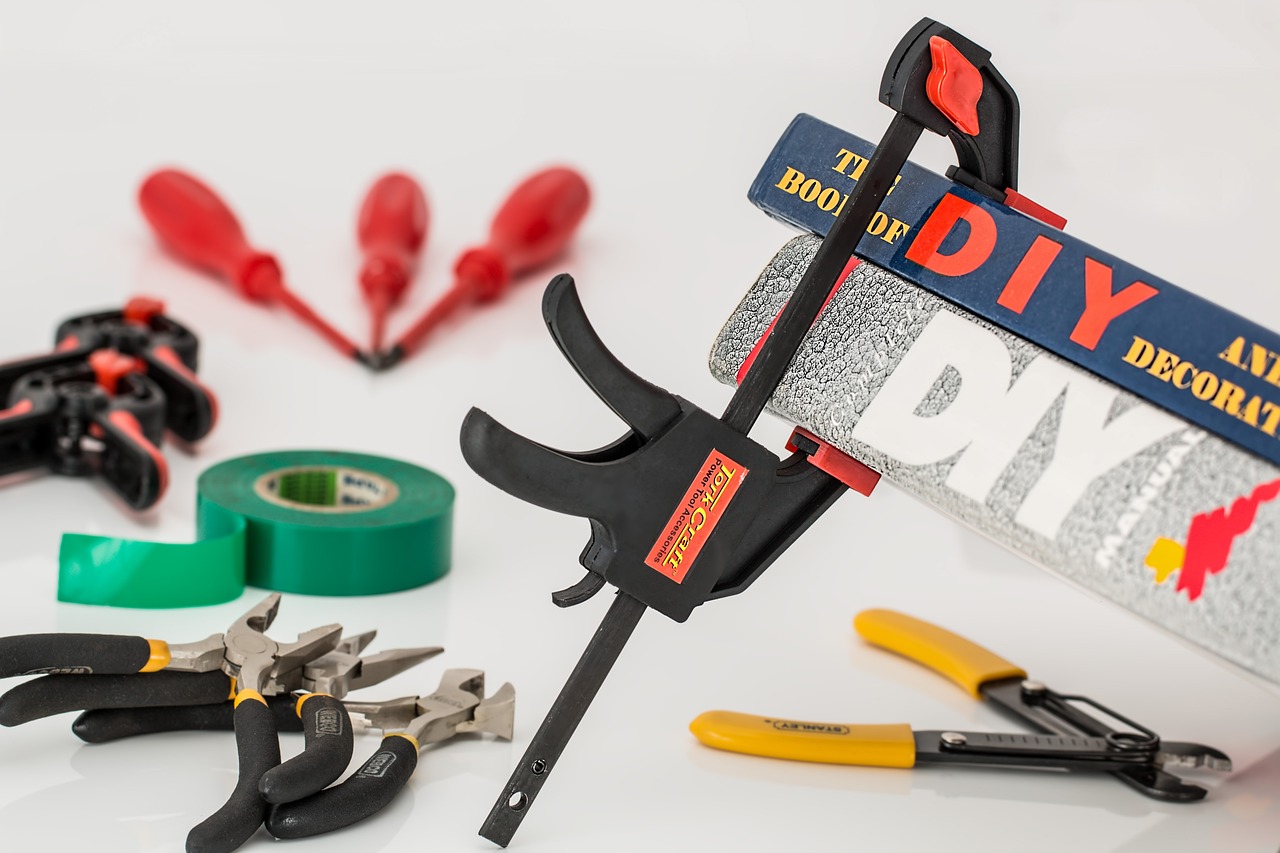
Encouraging Personalization
When it comes to crafting, personalization is the secret ingredient that transforms a simple project into a cherished masterpiece. Allowing children to customize their DIY moneybox not only makes the experience more enjoyable but also fosters a sense of ownership and pride. Imagine the joy on your child's face as they see their unique creation come to life, reflecting their personality and preferences!
There are countless ways to personalize a moneybox, and the possibilities are as vast as a child's imagination. From choosing vibrant colors to adding special decorations, each choice can tell a story. For instance, you might encourage your child to think about what colors they love or what themes resonate with them. Are they into superheroes, animals, or perhaps their favorite cartoon character? This can spark a creative dialogue that enhances their engagement in the project.
Here are some fun ideas to inspire personalization:
- Color Choices: Let your child pick out their favorite colors for painting the box. This simple act can make the moneybox feel truly theirs.
- Decorative Elements: Use stickers, washi tape, or even drawings to adorn the moneybox. Recycled materials like bottle caps or fabric scraps can also add a unique touch.
- Names or Initials: Encourage your child to write their name or initials on the moneybox. This small detail can create a stronger connection to their creation.
- Themed Designs: If your child loves a particular theme, such as space or dinosaurs, they can incorporate these elements into their design, making the moneybox a reflection of their interests.
In addition to the physical aspects of personalization, this project can also serve as a wonderful opportunity to discuss family values around money. By involving children in conversations about why saving is important, you can reinforce lessons about financial responsibility while they express themselves creatively. This approach makes the moneybox not just a decorative item, but a meaningful tool in their journey toward financial literacy.
Ultimately, the act of personalizing a moneybox is more than just an arts and crafts project; it’s a chance for children to explore their creativity and develop a sense of identity. Every brushstroke, sticker, and decoration adds a layer of significance to their moneybox, transforming it into a symbol of their aspirations and dreams. So, as you embark on this crafting adventure together, remember to celebrate each unique creation, as it represents not just savings, but the vibrant personality of your child!
| Question | Answer |
|---|---|
| What materials do I need to create a DIY moneybox? | You will need cardboard, paint, scissors, glue, and any decorative items like stickers or markers. |
| How can I encourage my child to personalize their moneybox? | Ask them about their favorite colors, themes, or characters, and let them choose decorations that reflect their interests. |
| Can this project teach my child about financial literacy? | Absolutely! Discussing saving goals and budgeting while crafting can help instill important financial concepts in a fun way. |
| What age is appropriate for this DIY project? | Children of all ages can participate, but younger kids may need more guidance and assistance with cutting and glueing. |

Decorating Techniques
When it comes to decorating your DIY moneybox, the sky's the limit! This is where creativity truly shines, and kids can let their imaginations run wild. One of the most exciting aspects of this project is the opportunity to explore various that can transform a simple cardboard box into a vibrant, personalized masterpiece. Let's dive into some fun ideas that can elevate your moneybox game!
First off, consider using paints. Acrylic paints are fantastic because they come in a rainbow of colors and dry quickly, making them perfect for impatient little hands. Kids can paint their moneybox in their favorite colors or even create fun patterns like stripes, polka dots, or even a galaxy theme. Imagine a moneybox that looks like a treasure chest, bursting with colors that catch the eye!
Another creative avenue is to incorporate stickers. Stickers are an easy way for children to add their personal touch without the mess of paint. They can choose from a variety of themes—animals, superheroes, or even their favorite cartoon characters. This not only makes the moneybox unique but also allows them to express their interests and personality.
For those looking to get a bit crafty, consider using recycled materials for decoration. Old magazines, newspapers, or even fabric scraps can be transformed into beautiful collages. Encourage your child to cut out pictures or words that resonate with them and glue them onto the moneybox. This not only adds texture but also promotes the idea of recycling and reusing materials, teaching valuable lessons about sustainability.
In addition to these techniques, you can also explore the world of embellishments. Think about adding glitter for some sparkle or using sequins to create a shimmering effect. Ribbons and washi tape can also be fantastic for adding borders or fun designs. Each embellishment adds a layer of personality and flair, making the moneybox truly one-of-a-kind.
As you embark on this decorating adventure, remember that the process is just as important as the end result. Encourage your child to experiment and try different techniques, reminding them that there are no mistakes in art—only opportunities to create something new. By allowing them to take charge of the decorating phase, you’re not just crafting a moneybox; you’re also fostering their confidence and creativity.
Finally, don’t forget to take a moment to appreciate the finished product together. Celebrate their hard work and creativity! This will not only reinforce their sense of accomplishment but also strengthen the bond you share through this engaging activity. After all, a DIY moneybox isn't just a tool for saving; it's a canvas for creativity and a gateway to valuable life lessons.
- What age is appropriate for kids to start crafting a moneybox? Most kids aged 5 and up can enjoy this project with some adult supervision, especially when using scissors or glue.
- Can we use materials other than cardboard? Absolutely! You can use plastic containers, wooden boxes, or even tin cans—just ensure they’re safe and suitable for crafting.
- How can we incorporate financial lessons while decorating? As you decorate, talk about what each design represents in terms of saving goals, turning the creative process into a learning experience.

Incorporating Family Values
When it comes to teaching kids about money, incorporating family values is essential. The DIY moneybox project serves as a perfect platform to initiate conversations about how your family views money and savings. You can start by sharing stories about how you, as a family, handle finances. For instance, you might discuss the importance of saving for family vacations or how your parents taught you to save for special treats. This not only makes the crafting experience richer but also helps children understand that financial responsibility is a shared family value.
As your children decorate their moneybox, you can encourage them to think about what they want to save for. Is it a new toy, a game, or perhaps contributing to a family outing? By discussing these goals, you can weave in lessons about prioritizing needs versus wants, which is a crucial aspect of financial literacy. For example, you might say, "If you save a little each week, you can reach your goal faster!" This approach not only teaches them about saving but also about the importance of patience and planning.
Moreover, you can use this opportunity to discuss the concept of charity. Ask your child if they would like to set aside a portion of their savings for a cause they care about. This introduces them to the idea of giving back and reinforces the value of helping others. Consider creating a small section in their moneybox specifically for donations, which can lead to conversations about community and social responsibility.
To make this experience even more impactful, you could create a
| Family Value | Explanation |
|---|---|
| Savings | Understanding the importance of saving for future needs and goals. |
| Budgeting | Learning to allocate money wisely for different purposes. |
| Charity | Recognizing the importance of giving back to the community. |
| Patience | Valuing the process of waiting to achieve a financial goal. |
Incorporating these discussions into the DIY moneybox project not only makes it a fun activity but also a meaningful one. This way, your children will not only end up with a personalized moneybox but also with a deeper understanding of financial values that can guide them throughout their lives. Remember, the lessons learned during this crafting session can have a lasting impact, shaping how they view money and its role in their lives.
- What age is appropriate for children to start learning about money? Generally, children can start learning about money concepts as early as age 4 or 5 through simple activities like saving coins.
- How can I make financial discussions fun for my kids? Use games, crafts, or real-life scenarios to teach financial concepts in an engaging way.
- What if my child is not interested in saving? Encourage them by discussing goals that excite them and show them how saving can help achieve those dreams.
Frequently Asked Questions
- What materials do I need to make a DIY moneybox?
You’ll need some basic supplies like cardboard, paint, scissors, and glue. These materials are usually easy to find around the house or at your local craft store, making it a fun and accessible project for kids!
- How can crafting a moneybox help my child?
Crafting a moneybox not only enhances your child's fine motor skills but also boosts their creativity and problem-solving abilities. Plus, it gives them a sense of accomplishment as they see their finished product!
- What are some fun design ideas for a moneybox?
There are endless possibilities! You can go for a simple box design or get creative with themed moneyboxes like animals, superheroes, or favorite characters. Let your child’s imagination run wild!
- How do I teach my child about saving money while making the moneybox?
Integrate discussions about saving and budgeting into the crafting process. Encourage them to set saving goals, which helps them understand the value of money and the importance of working towards something they want.
- Can we personalize the moneybox?
Absolutely! Personalization is key. Kids can choose their favorite colors, add decorations, or even write their names on it. This makes the moneybox special and encourages them to take ownership of their savings.
- What decorating techniques can we use?
Get creative with paints, stickers, or even recycled materials. The more unique and reflective of your child's personality, the better! This is where the fun really shines.
- How can I use this project to discuss family values about money?
Use the crafting time as an opportunity to talk about your family’s values surrounding money. Discuss the importance of saving and financial responsibility, making it a learning experience that reinforces good habits.



















